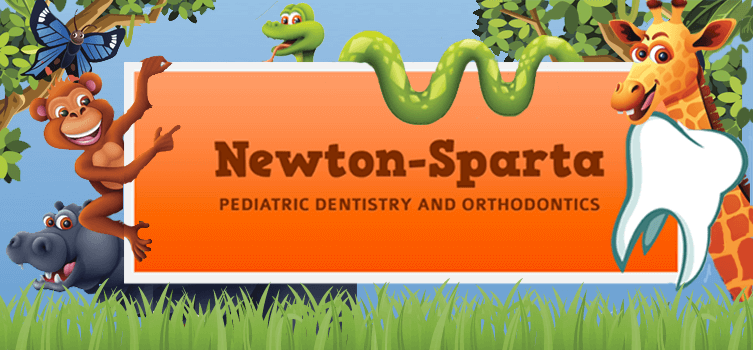Pediatric Dentistry
Preventive and Diagnostic
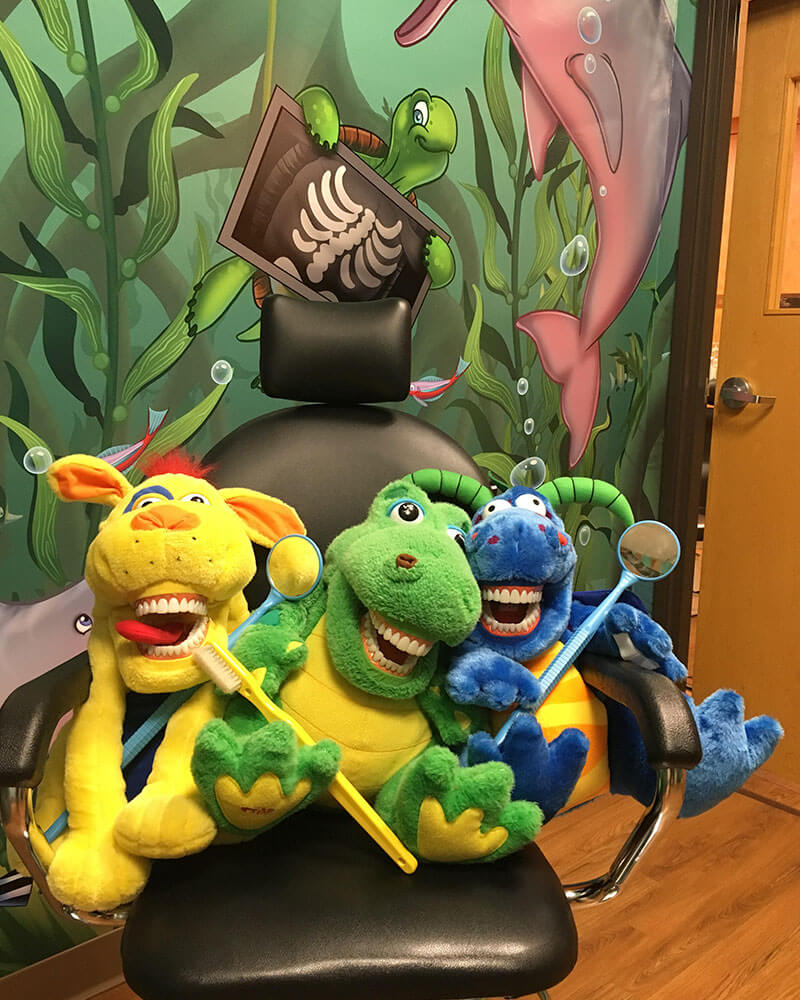
An oral evaluation is recommended every six (6) months to prevent cavities and other dental problems. During an oral evaluation, a thorough examination of the mouth, head, and neck is performed to detect abnormalities.
Throughout the year, we offer group presentations for children that teach about eating healthy, dental hygiene and proper oral care techniques. Please let our staff know if you are interested in setting up a presentation.
Fluoride is a natural substance that helps strengthen teeth and prevent decay. Fluoride treatments are administered at this office as an important component of pediatric dental treatment. The fluoride is applied to the teeth in varnish form.
Dental X-rays are a valuable diagnostic tool used to identify decay, extra teeth, bone defects, tumors, cysts and check the progress of previous procedures. Advances in technology now allow for digital X-rays, which reduce radiation exposure more than 50 percent, and produce instant, high-quality images that can be viewed immediately by the dentist and the patient.
Dental sealants are made of a safe resin material which is applied to the surfaces of teeth (commonly permanent molars) to prevent cavities. The sealant material fills in the crevices of a tooth and “seals” off the tooth from cavity-causing agents like food and plaque. The teeth are prepared for the sealant application and the sealant is painted directly onto the chewing surface of each tooth and then hardens. Sealants are applied in one visit.
During a regular check-up, oral hygiene instructions are given to both patient and parent. Good home care can reduce the risk of plaque and tartar build-up which can lead to cavities. Instructions include proper techniques for brushing, flossing, and using mouth rinses.
Regular cleanings help keep gums healthy and teeth cavity-free. A dental cleaning includes removal of tartar and plaque and polishing of the teeth to remove stains and prevent further buildup of plaque.
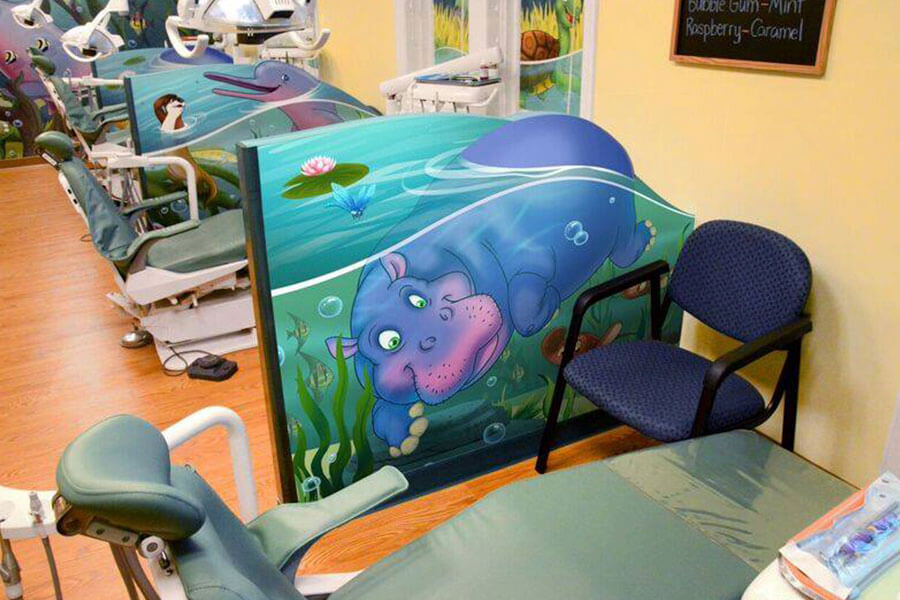
Restorative and Aesthetic
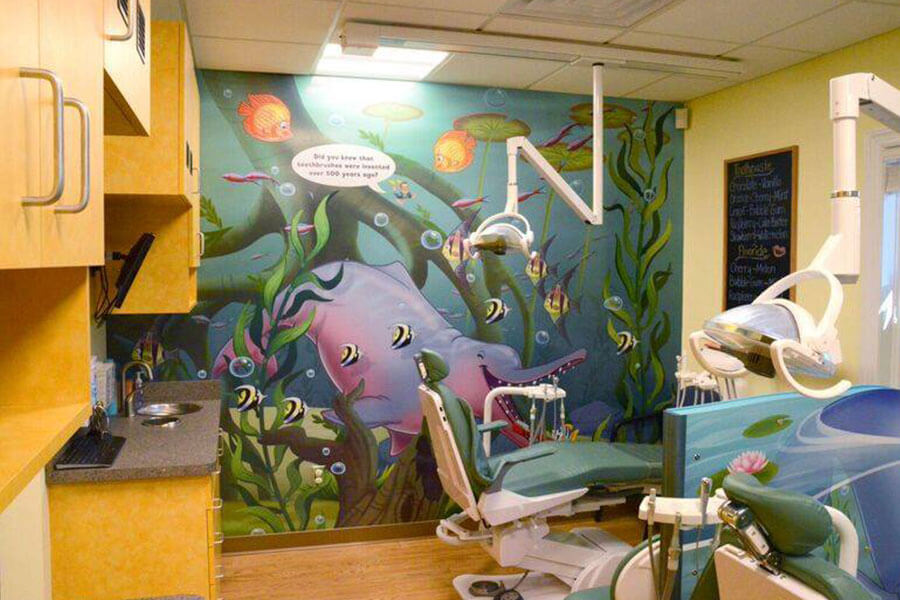
Composite (White) Fillings
Tooth-colored fillings are the most lifelike material used to fill cavities. Composite fillings can be done in one visit. Once the decay is removed, the tooth is filled with this composite material that hardens immediately after placement.
Amalgam Fillings
We do also offer amalgam fillings as needed. Strong and durable, amalgam fillings can be done in one visit. Once the decay is removed from the tooth, it is filled with this amalgam material and hardens immediately.
Crowns are used to restore damaged or decayed teeth in children. Crowns completely cover the remaining tooth structure after it has been treated. They can be made of many different materials, including stainless steel, composite materials, polycarbonate, resin, porcelain, and zirconia. We offer several different options, allowing us to choose what is best for each child and each tooth.
Root canals involve treating decay that is inside of the tooth. If the inside of the tooth, known as the dental pulp, is damaged it will gradually decay if left within the tooth. The pulpotomy involves removing the pulp, cleaning out the root canals, and packing the canals with material that will help restore the tooth until it is time for it to exfoliate (or fall out on its own naturally).
A tooth that can not be saved with restorative materials may need to be removed. Before removing the tooth, the area will be numbed with local anesthesia. The tooth is then loosened using a special dental instrument known as an elevator. After the tooth is loosened from the socket, it is removed.
Orthodontics
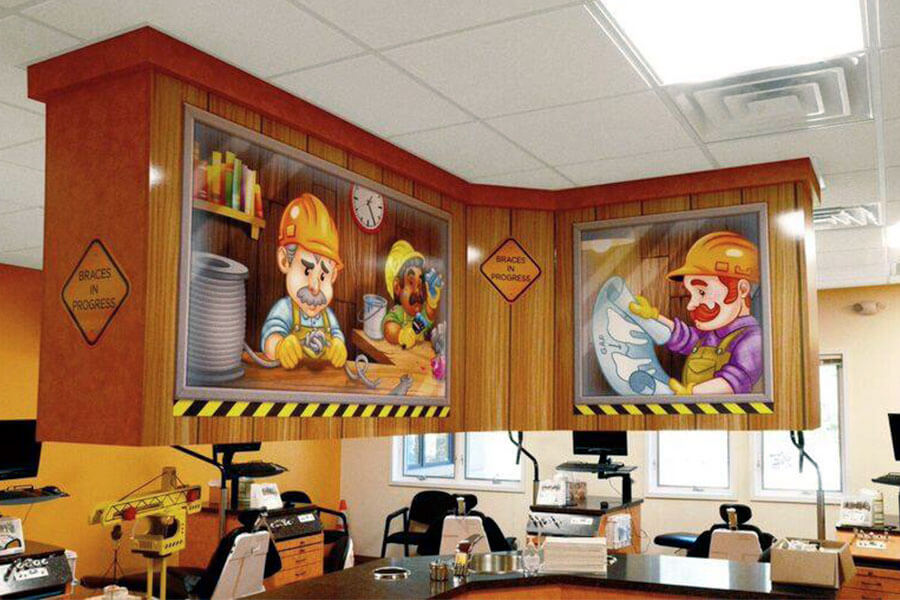
A habit appliance is useful to help stop a thumb or finger habit and/or to help re-train an improper tongue position or swallowing pattern. It is sometimes necessary to place an appliance to minimize the harm and distortion the habits or tongue posture can have on teeth. Most habit appliances are banded for adhesion to the back molars and are not removable.
Space maintainers are used to keep teeth from drifting into an empty tooth space due to early loss of primary (baby) teeth. Baby teeth act as a guide for the eruption of the permanent teeth. A space maintainer is made of stainless steel and/or plastic. It can be removable or fixed to the teeth.
Molar adjustment can be accomplished prior to full orthodontic treatment through the use of a Distalizer. This treatment technique can effectively position molars for bracketing and significantly shorten the patient’s full orthodontic treatment time.
The American Association of Orthodontists recommends that every child see an orthodontist by age 7, and perhaps earlier if a an orthodontic concern is identified. Effective early treatment can reduce the need for tooth removal, create space for crowded, erupting teeth and also reduce the risk of injury to protruding front teeth.
Learn More about Early Treatment

Invisalign® uses a custom-made series of aligners made of smooth, comfortable and virtually invisible plastic to gently straighten your teeth without the look and discomfort of traditional metal braces.
Sedation Dentistry
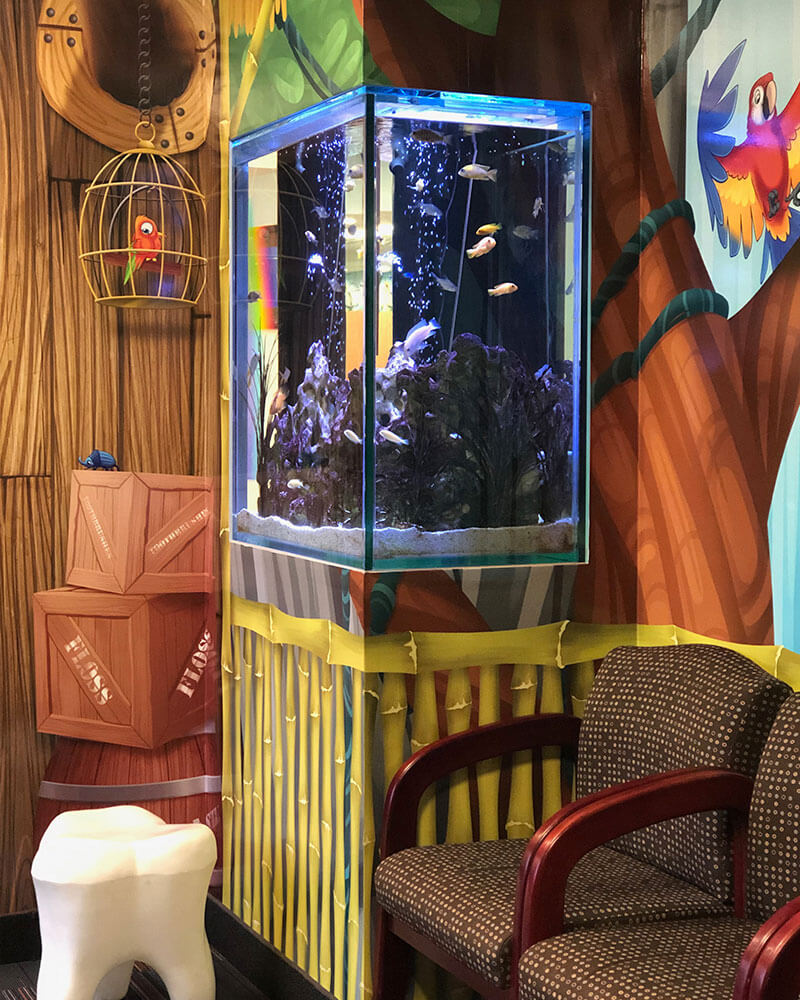
Local anesthesia refers to a topical and/or injected anesthetic that will affect only the targeted area for a brief period of time to minimize or eliminate sensation or pain in that specific “localized” area during a dental procedure.
Nitrous oxide, sometimes referred to as “laughing gas,” is an effective and safe sedation agent that is inhaled through a mask that fits over your child’s nose. Mixed with oxygen, nitrous oxide allows the patient to breathe normally through their nose, and within minutes they should start to feel the effects. They may feel light-headed or notice a tingling in their arms and legs. Some patients comment that their legs and arms feel heavy. Ultimately, they should feel comfortable and calm. The effects of nitrous oxide wear off quickly after the mask is removed. Talk to the doctor about whether nitrous oxide would be a good option for your child.
General anesthesia is provided in a hospital setting and uses medications to allow the patient to be asleep while receiving dental treatment. Patients with special needs, extensive tooth decay or who are undergoing surgical dental procedures may benefit from general anesthesia. Your doctor can discuss the risks and benefits of general anesthesia to help you decide if this is a good choice for your child.
We are affiliated with Morristown Memorial Hospital.
